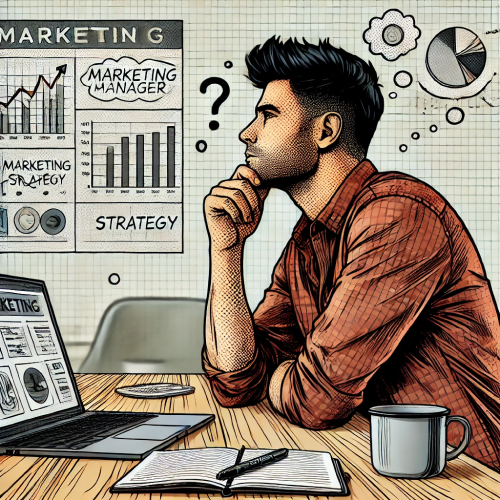Running an e-commerce store means paying close attention to your website’s performance.
One of the most telling metrics is bounce rate—it can give you crucial insight into how well your site engages visitors.
But what exactly is bounce rate, and why does it matter so much for your e-commerce business?
In this post, we’ll break it down in a beginner-friendly way, helping you understand how this metric can affect your website’s success and customer retention.
What is Bounce Rate?
Before diving into why bounce rate matters, let’s define what it actually is.
Bounce rate is the percentage of visitors who land on a page of your site and leave without taking any further action. They don’t click on another page, make a purchase, or even interact with the content.
How bounce rate is calculated?
Calculating the bounce rate is not a rigid process. How your website events are documented gives you the power to directly influence the measurement, putting you in control of your website's performance metrics.
Let’s start with a basic scenario: a single-page session event.
If we define bounce rate as a metric that tracks how many pages a user navigates in a single session, then the calculation would be:
Bounce Rate: (Single-Page Sessions / Total Sessions) x 100
In other words, people who do not navigate to different pages of your website are bounced.
But what if, on the same page, they interact with an image gallery or product details?
Then, we’ll need to do the same calculation, but it will be with engagement events this time. These could be actions like clicking on a product, viewing a video, or spending a certain amount of time on a page.
Bounce Rate: ( Unengaged Sessions / Total Sessions ) x 100
With the introduction of Google Analytics 4, both engagement and bounce rates are metrics that help evaluate how visitors engage with our website.
Both metrics are calculated using the following criteria:
- Duration is longer than 10 seconds
- An event is triggered (product click, video views, etc.)
- Has two or more page views
With this new paradigm, the engagement rate is the percentage of engaged sessions, meaning the user interacted with your website somehow. The bounce rate, on the other hand, is the percentage of sessions that were not engaged, meaning the user left your site without interacting.
A high bounce rate means visitors aren’t sticking around, which could signal deeper engagement issues.
But remember that not all high bounce rates are bad—sometimes, they’re a sign that visitors found what they needed quickly (for example, on a contact page).
However, in most cases, a high bounce rate indicates missed opportunities for deeper engagement.
Why Bounce Rate Matters
Now that you know what bounce rate is, let’s talk about why it matters.
A high bounce rate is often a red flag that something’s wrong with your website.
It might mean that visitors aren’t finding your content relevant, the page loads too slowly, or the user experience isn’t intuitive.
In e-commerce, this could translate to fewer conversions and potential revenue loss.
Here’s why bounce rate matters for your customer retention strategy:
- Lost opportunities: When visitors leave after one page, you miss out on the chance to convert them into loyal customers.
- Retention impact: A lower bounce rate often correlates with higher engagement, which is crucial for getting customers to return and make repeat purchases.
- SEO relevance: Although bounce rate isn’t a direct ranking factor, it can affect your search engine performance. Search engines may interpret a high bounce rate as a sign that your content isn’t meeting user expectations, which can hurt your visibility.
How Bounce Rate Impacts Overall Website Performance
Bounce rate is more than just a number—it’s a performance indicator for your entire website. Here’s how it fits into the bigger picture:
- Disrupts the customer journey: If visitors are bouncing, they aren’t progressing through your conversion funnel. This means fewer sales, fewer newsletter sign-ups, and less engagement overall.
- Reduces engagement: A high bounce rate often means visitors spend less time on your site. This translates to fewer clicks, shorter sessions, and lower engagement metrics like time-on-page and pageviews per session.
- A diagnostic tool: Use bounce rate to identify problem areas. For example, a high bounce rate on a product page could indicate that the page is confusing or the content isn’t compelling.
What Tools Can Provide Bounce Rate Insights
You don’t have to guess what your bounce rate is—there are plenty of tools that provide detailed insights:
- Google Analytics is one of the most popular tools for website analytics. It allows you to monitor bounce rate across different pages, visitor segments, and even devices. You can also track bounce rate over time to see how your optimizations are performing.
- Page Heatmap tools like Hotjar and Crazy Egg offer visual insights, such as heatmaps, to show how visitors interact with your website before they bounce. This can give you more context to understand why visitors are leaving.
What Pages Bounce Rate is Critical On
Not every page on your site is equally crucial regarding bounce rate. Here are the pages where you need to pay close attention to this metric:
- Landing pages: This is where visitors get their first impression of your site. If your bounce rate is high on landing pages, it could indicate that visitors aren’t finding what they expected. Optimizing these pages can significantly improve engagement.
- Product pages: In e-commerce, product pages are crucial. A high bounce rate here might mean that your product descriptions aren’t clear, the images aren’t engaging, or the page is too slow to load. Addressing these issues can help keep customers on-site longer, increasing the chances of a sale.
- Checkout pages: If your bounce rate is high during checkout, you’re losing customers at a critical stage. This often signals friction in the buying process, such as complicated forms or unexpected costs. Simplifying checkout is essential for reducing bounce and increasing conversions.

Grow your E-Commerce with a CRM
Learn how to use HubSpot's free tools in this online course.
- Step-by-step videos.
- Worksheets.
- Ready to use assets.
- 30min Strategy Call.
Hypothetical Example
Let’s say GlowBite, a hypothetical e-commerce store specializing in fitness and lifestyle products, has a 70% bounce rate on its product pages. Through Google Analytics, GlowBite discovers that most visitors leave because the pages load too slowly and the product descriptions aren’t clear enough.
Solution:
GlowBite optimizes page load speed by compressing images and improving its hosting infrastructure. It also rewrites product descriptions to match user intent better and highlight their benefits.
Result:
After making these changes, GlowBite’s bounce rate dropped to 45%, and the company saw a noticeable increase in conversions. By improving the bounce rate, GlowBite kept more visitors engaged and turned them into customers.
Key Takeaways
Bounce rate might seem like just another number, but it’s one of the most critical metrics for understanding how visitors interact with your site. Reducing bounce rate can improve user engagement, increase customer retention, and drive more conversions.
Start monitoring your bounce rate today to identify areas of improvement and take actionable steps toward growing your customer base.
Bounce rate is a key engagement metric: It shows how well your site retains visitors and whether they’re exploring further.
Optimizing bounce rate can improve retention: Reducing bounce rate means keeping visitors engaged, increasing the likelihood of turning them into repeat customers.
Track it regularly: Tools like Google Analytics and HubSpot give you the data needed to monitor bounce rate and improve site performance.


